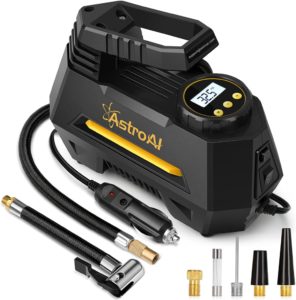What is a Tire Pressure Monitoring System in BMW 7 Series?
The BMW 7 Series is known for its luxury and sophistication, and one of its many advanced features is the Tire Pressure Monitoring System (TPMS). This system constantly keeps an eye on each tire’s pressure, making sure they are neither underinflated nor overinflated. If there is any issue with the tire pressure, the TPMS alerts the driver. Keep scrolling down if you want to learn how the tire pressure monitoring system in your BMW 7 series works, the steps to reset the warning light, and the most common causes for the light to turn on!
How to Reset BMW 7 Series Tire Pressure Warning Light:
MODELS / VERSIONS
2008 – 2014 (F01/F02/F03/F04) iDrive
Select the MENU button on the iDrive system
Select VEHICLE INFORMATION from the main iDrive menu using the iDrive scroll and selector wheel.
Select VEHICLE STATUS
Select PERFORM RESET
Select PERFORM RESET again
Drive the vehicle!
2014 – 2021 (G11/G12) iDrive
Select the MENU button on the iDrive system. (Using the scroll wheel by the shifter)
Select VEHICLE INFORMATION from the main iDrive menu using the iDrive scroll and selector wheel.
Select VEHICLE STATUS.
Select PERFORM RESET.
Select PERFORM RESET again
Drive the vehicle!
2022 – PRESENT (G70)
Select CAR on the iDrive infotainment screen.
Select VEHICLE STATUS.
Select TIRE PRESSURE MONITOR.
Select TIRE SETTINGS.
Choose the correct TIRE TYPE. (choose summer or winter if you swap tires for different seasons)
Select SAVE TIRE SETTINGS.
If you are swapping between winter and summer tires, follow the same steps but select PERFORM RESET after selecting the season.
Drive the vehicle!
Everything in this article is applicable to all BMW 7 Series versions and models including M competition versions. (730d, 740Li, 740i, 740d, 750i, 750Li 760i, i7)
2014 - 2021 MODEL G11/G12
2022 - PRESENT MODEL G70
How Does the BMW 7 Series TPMS Work?
Continuously monitors tire pressure: The BMW 7 Series TPMS constantly keeps track of the air pressure in all four tires.
Uses sensors: Each tire is equipped with a pressure sensor that measures the pressure and sends the information to the vehicle’s onboard computer. Sensors also measure current tire temperature.
Compares to optimal pressure: The system compares the current tire pressure with the recommended pressure levels for the BMW 7 Series set by BMW.
Alerts the driver: If any tire’s pressure deviates from the recommended range, the TPMS sends a warning to the driver via the instrument panel or infotainment screen. (A visual and audible notification)
Identifies the affected tire: The system specifies which tire has the pressure issue, allowing the driver to address the problem immediately.
When to Reset BMW 7 Series TPMS?
• After tire replacement: New tires may have differing pressure levels compared to the previous set.
• After a tire rotation: This ensures accurate monitoring of each tire’s pressure in its updated position.
• Switching between seasonal tires: When changing between summer and winter tires.
• Modifying tire pressure: In cases where you’ve adjusted the pressure due to varying loads. If you are carrying or towing lots of weight.
• Post tire inflation: After inflating your tires to the correct pressure in response to a low-pressure warning.
• Replacing a sensor: When a damaged or malfunctioning sensor needs to be installed.
• TPMS malfunction: If the TPMS displays an error message or isn’t functioning properly.
• After wheel-related services: Following rotations, balances, or alignments.
• During regular maintenance: As a component of your vehicle’s routine upkeep.
• After a software update: When your car receives a TPMS-specific software upgrade.
What are Common Causes for Tire Pressure Lights to Turn On in BMW 7 Series?
• Low tire pressure: The most frequent reason for the tire pressure light activation is having one or more tires with pressure below the recommended level.
• Sudden pressure loss: A sharp decrease in tire pressure, typically caused by a puncture or leak.
• Temperature changes: Ambient temperature variations can impact tire pressure, potentially triggering the TPMS light if pressure falls outside the acceptable range (a common occurrence!).
• Faulty TPMS sensor: A malfunctioning or damaged TPMS sensor may produce inaccurate readings.
• Depleted sensor battery: TPMS sensors rely on batteries (similar to watch batteries) which eventually run out, typically lasting 5 to 7 years.
• High tire pressure: Overinflating tires can also activate the tire pressure light.
• Tire damage: Physical harm to the tire, such as bulging sidewalls, cuts, or cracks, can result in pressure changes and activate the tire pressure light.
• Wheel/rim damage: In BMWs cracked wheels causing air leaks are a frequent issue. (Super Common!)
• Spare tire: Driving with a spare tire or donut that lacks a sensor. (for those without runflats)
• Recent tire service: The TPMS may not have been reset correctly after tire rotation, installation, or inflation.
• Malfunctioning TPMS control module: A faulty TPMS control module might not process sensor data accurately.
• Seasonal tire changes: Failing to reset the TPMS when switching between summer and winter tires.
• Dead or jump-started battery: After replacing or jump-starting your vehicle’s battery.
What Happens When Your BMW 7 Series Tires are Underinflated?
When the tires on your luxurious BMW 7 Series are underinflated, the driving experience you’ve grown to love may suddenly feel compromised. Rolling along on underinflated tires not only affects the smoothness and stability of your ride but also raises the likelihood of tire damage, uneven tread wear, and even blowouts. As a consequence, your vehicle’s fuel efficiency suffers. Thankfully, the ever-watchful TPMS is there to warn you of the issue, allowing you to quickly address the problem and regain the seamless driving experience that defines the BMW 7 Series!



